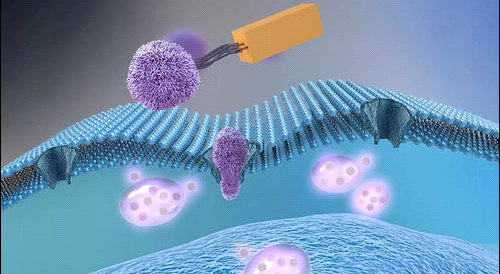N3-PEG-COOH接枝壳聚糖纳米颗粒的制备与表征
宝贝标题效果型聚乙二醇化壳聚糖纳米级科粒的化学合成和定量分析小说作品肖巨颖; 赵霞; 林园; 苏朝晖期刊论文下载链接://openurl.ebsco.com/EPDB%3Agcd%3A14%3A17421374/detailv2?sid=ebsco%3Aplink%3Acrawler&id=ebsco%3Adoi%3A10.19894%2Fj.issn.1000-0518.240425&link_origin=none绪论:In the present study, Carboxyl and azide terminated polyethylene (N3-PEG-COOH) with different relative molecular mass of 500 and 1000 were grafted onto the chitosan (CS) backbones through amide reaction, followed by the preparation of chitosan-polyethylene glycol (CS-PEG) nanoparticles with controllable size and zeta potential via sodium tripolyphosphate (TPP) ionotropic gelation. Characterized by Fourier transform infrared spectrometer (FT-IR), nuclear magnetic resonance spectroscopy (NMR) and thermal gravimetric analyzer (TGA) confirmed the successful incorporation of PEG, and the structures of the nanoparticles were analyzed by transmission electron microscopy (TEM) and nanoparticle size and zeta potential analyzer. The results demonstrated that when m (CS) ∶m (TPP) is 3.33∶1, CS nanoparticles show excellent structural stability. Based on this, increasing the PEG grafting density further reduces the particle size and surface potential of CS-PEG nanoparticles. Moreover, the chemical reactivity of azide in CS-PEG nanoparticles was proved by the click reaction with alkyne-modified fluorescent molecule (5-FAM-alkyne), showing their potential as platform for target drug delivery, fluorescent probes and other biomedical applications.



 pg电子娱乐游戏app
微信公众号
pg电子娱乐游戏app
微信公众号 官方微信
官方微信